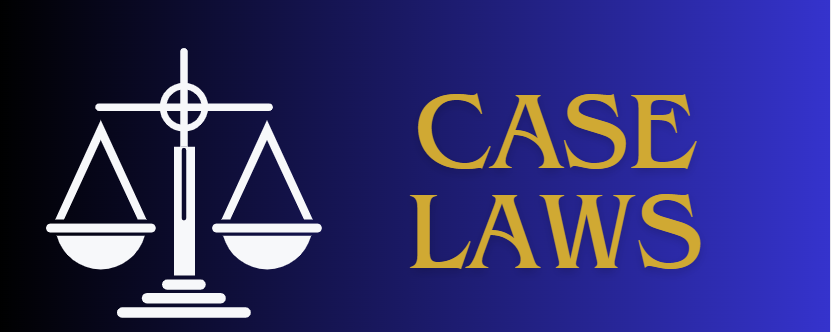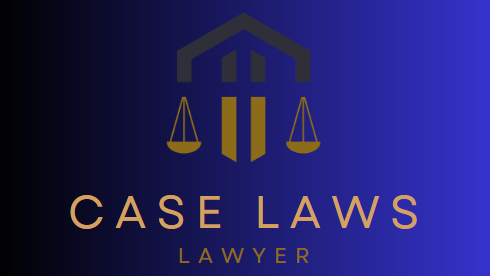PLJ 2023 Cr.C. 1070
[Lahore High Court, Lahore]
Present: Tariq Saleem Sheikh, J.
SHARAFAT ALI--Petitioner
versus
STATE etc.--Respondents
Crl. Misc. No. 10982/B of 2023, decided on 8.3.2023.
Pakistan Penal Code, 1860 (XLV of 1860)--
----S. 335--Itlaf-i-salahiyyat-i-udw--Section 335, PPC defines Itlaf-i-salahiyyat-i-udw as destruction or permanent impairment of functioning, power, or capacity of a person’s body organ--This offence is punishable u/S. 336, PPC. [P. 1072] A
Criminal Procedure Code, 1898 (V of 1898)--
----Ss. 497(2) & 498--Bail before arrest, dismissal of--Allegation of--Itlaf-i-Salahiyat-i-udw--It follows that teeth are not bones--Breaking of tooth constitutes Itlaf-i-salahiyyat-i-udw--This offence is punishable u/S. 336, PPC with Qisas, and if that is not executable under principles of equality enunciated by Islam, offender is liable to Arsh and may also be punished with imprisonment of either description for a term extending up to ten years as Ta’zir--Section 337-U, PPC sets out scale of Arsh for teeth--The Arsh for causing Itlaf of a tooth other than a milk tooth shall be equivalent to one-twentieth of Diyat--The impairment of portion of a tooth outside gum amounts to causing Itlaf of a tooth)--The Arsh for causing Itlaf of twenty or more teeth shall be equal to value of Diyat--Where Itlaf is of a milk tooth, offender is liable to Daman and may also be punished with imprisonment of either description for a term extending to one year--Where, however, Itlaf of a milk tooth impedes growth of a new tooth, offender is liable to Arsh equal to one-twentieth of Diyat--In cases of Itlaf-i-salahiyyat-i-udw, sections 332, 335, 336 and 337-U, PPC are to be read conjointly--Counsels contention that it merely attracts Section 337-U and offence is punishable with Arsh only is misconceived--It is meant to protect innocent people implicated in a criminal case for devious and ulterior motives--It cannot be granted unless accused meets conditions mentioned in Section 497(2), Cr.P.C--He must demonstrate that reasonable grounds exist to believe that he is not guilty of alleged offence and there are sufficient grounds to warrant further inquiry--Bail dismissed. [Pp. 1072 & 1073] B, C & D
2017 SCMR 2060.
Pre-arrest bail--
----Apart from making out a prima facie case for grant of pre-arrest bail, accused-petitioner must show some mala fide on part of complainant and investigating agency. [P. 1073] E
PLD 1981 Lahore 599.
Mian Bilal Safdar, Advocate, with Petitioner.
Rai Asif Mahmood, Deputy Prosecutor General, for State.
Complainant in person.
Date of hearing: 8.3.2023.
Order
Through this application, the Petitioner seeks pre-arrest bail in case FIR No. 6803/2022 dated 2.12.2022 registered at Police Station Chung, Lahore, for offences under Sections 337-U, 337-L(2) of the Pakistan Penal Code, 1860 (“PPC”).
2. Briefly, the prosecution case is that on 29.11.2022 at about 05:15 p.m. the Petitioner and his co-accused, while armed with different weapons, attacked the Complainant and his cousin Adeel and wounded them.
3. Arguments heard. Record perused.
4. The Petitioner is nominated in the FIR with the specific allegation that he hit Complainant’s cousin Adeel in the face with an iron rod, breaking two teeth. The Medical Officer has classified this injury as Itlaf-i-salahiyyat-i-udw. Mian Bilal Safdar, Advocate, contends that it attracts Section 337-U, PPC and is punishable with Arsh only. Since the law does not provide any jail term for the offence, the Petitioner is entitled to bail.
5. Chapter XVI of the Pakistan Penal Code deals with offences affecting the human body. Section 332(1), PPC defines hurt. It states that a person is said to cause hurt when he causes pain, harm, disease, infirmity, or injury to another person or impairs, disables, disfigures, defaces, or dismembers any organ of his body or part without causing his death. According to Section 332(2), PPC, hurt is of the following kinds:--
(a) Itlaf-i-udw
(b) Itlaf-i-salahiyyat-i-udw
(c) Shajjah
(d) Jurh
(e) All kinds of other hurts.
6. According to Section 333, PPC, a person is said to cause Itlaf-i-udw if he dismembers, amputates, or severs somebody’s limb or body organ. This offence is punishable under Section 334, PPC.
7. Section 335, PPC defines Itlaf-i-salahiyyat-i-udw as the destruction or permanent impairment of the functioning, power, or capacity of a person’s body organ. This offence is punishable under Section 336, PPC.
8. The first question that requires determination is whether the tooth is an organ.
9. Teeth and bones comprise minerals and tissues, including calcium, phosphorus, and collagen, which give them strength and durability. Calcium and phosphorus are the most abundant minerals in both teeth and bones, while collagen is a protein that offers flexibility and resilience. Other minerals, including sodium, potassium, and magnesium, are also present in bones and teeth, but in much lesser amounts. Another similarity between teeth and bones is their structure. Both have a thick outer layer surrounding a softer, more flexible inner. This outer layer is known as the cortical bone in the bones and enamel in the teeth. Trabeculae, a network of minuscule holes and channels that line the interior of bones, are filled with bone marrow. In teeth, the interior contains a soft, pulpy material called the pulp, which contains blood vessels and nerves.
10. Although teeth and bones share many similarities in composition and structure, there are significant distinctions. For example: (i) Teeth are not considered bones because they are unrelated to other body bones. Teeth are anchored in the gums and jawbone but do not form part of the skeletal system. (ii) Bones provide structural support for the body, protecting organs and facilitating movement. On the other hand, teeth are meant to break down food into little pieces that can be easily swallowed and digested. Teeth also play a vital role in communication because they aid in facial expressions and speech. (iii) Teeth are ectodermal organs like hair, skin, sweat glands, and salivary glands. Bones are living tissues. (iv) Bones undergo constant remodelling, whereas teeth do not. Bones can repair themselves, even after a significant injury, such as a fracture. In contrast, teeth are incapable of self-repair. If a tooth is damaged or decayed, it cannot recover on its own. Instead, it must be fixed with dental procedures, such as fillings, root canals, or crowns. (v) Bones also contain marrow, which produces blood cells. Teeth do not have marrow.
11. It follows that teeth are not bones. Breaking of tooth constitutes Itlaf-i-salahiyyat-i-udw. This offence is punishable under Section 336, PPC with Qisas, and if that is not executable under the principles of equality enunciated by Islam, the offender is liable to Arsh and may also be punished with imprisonment of either description for a term extending up to ten years as Ta’zir. Section 337-U, PPC sets out the scale of Arsh for teeth. The Arsh for causing Itlaf of a tooth other than a milk tooth shall be equivalent to one-twentieth of Diyat. (The impairment of the portion of a tooth outside the gum amounts to causing Itlaf of a tooth). The Arsh for causing Itlaf of twenty or more teeth shall be equal to the value of Diyat. Where the Itlaf is of a milk tooth, the offender is liable to Daman and may also be punished with imprisonment of either description for a term extending to one year. Where, however, Itlaf of a milk tooth impedes the growth of a new tooth, the offender is liable to Arsh equal to one-twentieth of the Diyat.
12. In cases of Itlaf-i-salahiyyat-i-udw, Sections 332, 335, 336 and 337-U, PPC are to be read conjointly. Mr Safdar’s contention that it merely attracts Section 337-U and the offence is punishable with Arsh only is misconceived.
13. PWs Muhammad Naeem and Munir Hussain support the prosecution’s case. Their statements have been recorded under Section 161, Cr.P.C., which are corroborated by medical evidence. On a tentative assessment, there is sufficient incriminating evidence against the Petitioner. The alleged offence is not bailable.
14. The Petitioner has not brought any material on record which may suggest that the case against him is mala fide. It is a sine qua non for the grant of pre-arrest bail. In Muhammad Sadiq and another v. The State and another (2015 SCMR 1394), the Supreme Court of Pakistan ruled that bail before arrest is an extraordinary relief. It is meant to protect innocent people implicated in a criminal case for devious and ulterior motives. It cannot be granted unless the accused meets the conditions mentioned in Section 497(2), Cr.P.C. He must demonstrate that reasonable grounds exist to believe that he is not guilty of the alleged offence and there are sufficient grounds to warrant further inquiry. In Aamir Bashir and another v. The State and others (2017 SCMR 2060), the Supreme Court held that apart from making out a prima facie case for the grant of pre-arrest bail, the accused-petitioner must show some mala fide on the part of the complainant and the investigating agency.
15. I am also tempted to quote from the following excerpt from Shabbir Ahmad v. The State (PLD 1981 Lahore 599), a case decided by a Full Bench of this Court:
“The criteria laid down in Hidayat Ullah Khan’s case (PLD 1949 Lah. 21) has not undergone any change so far. The three
principles laid down therein have to be strictly followed. This power should sparingly be exercised in appropriate cases. The courts should strictly avoid the exercise of this power at random, which is likely to embarrass the prosecution in the investigation, as usually is the general complaint. The balance has to be kept, and each case has to be dealt with on its own merits. Every murderer, burglar, dacoit or person accused of offence disturbing the tranquillity of the State should not automatically get pre-arrest bail on mere asking. The court should seriously apply its mind before passing the order of pre-arrest bail. I must, however, make it clear that Courts are the guardians of the liberty of citizens. The abuse of power by the police to rope in innocent persons in order to humiliate them and to cause irreparable loss to their reputation should be equally kept in view. The golden principles in Hidayat Ullah Khan’s case must strictly be followed.”
16. This application has no merit and is, therefore, dismissed.
(A.A.K.) Application dismissed






0 Comments